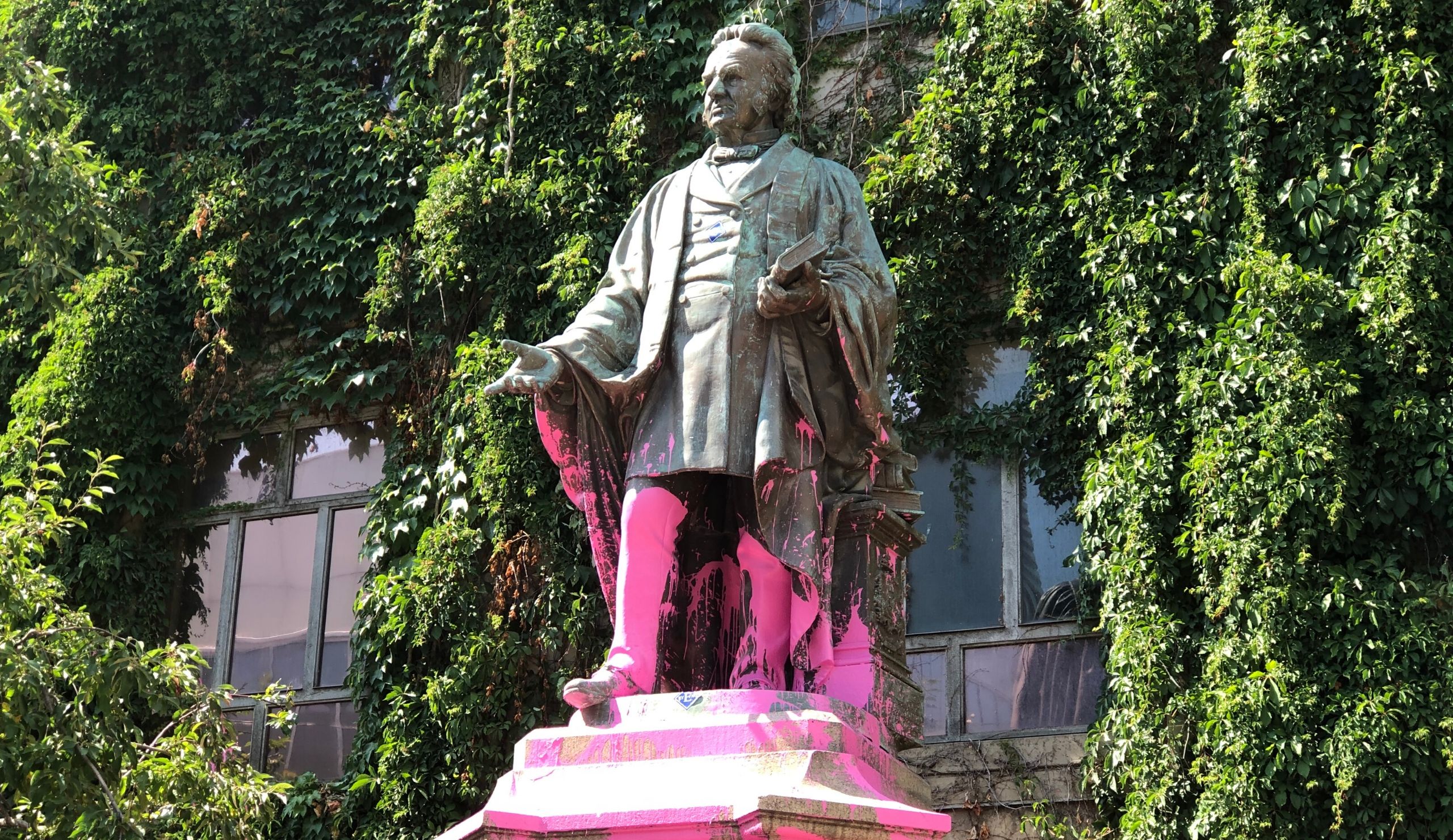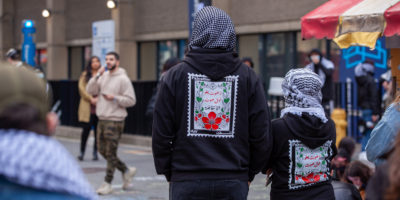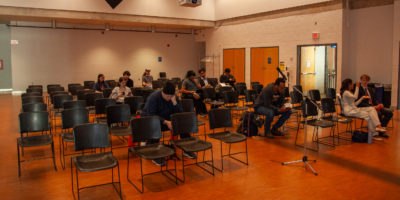By Sarah Tomlinson
Indigenous community members at Ryerson say the task force committee addressing concerns around the Egerton Ryerson statue on Gould Street should have used one of the local Indigenous languages as opposed to the Cree language in the new task force name.
Ryerson’s task force, previously called the “Egerton Ryerson Presidential Task Force,” recently changed its name to “Standing Strong,” a Spirit Name written in Cree as ‘‘Mash Koh Wee Kah Pooh Win.”
The task force is composed of alumni, students, staff, faculty and community representatives, including Indigenous and non-Indigenous voices. It was created in September 2020 after thousands of Ryerson community members signed an open letter to university president Mohamed Lachemi, demanding that the Egerton Ryerson statue be removed from campus. The letter was prompted after Black Lives Matter – Toronto protesters splashed pink paint on the statue in July 2020.
Hayden King, director of the Yellowhead Institute and Indigenous educator for the Faculty of Arts who is Anishinaabe from Beausoleil First Nation on Gchi’mnissing, said the Cree language shouldn’t have been used for the Spirit Name.
“Toronto is home to many Indigenous people, and we can use many languages and dialects; Anishinaabemowin, Mushkegowuk. That being said, I do think that we should try to use local languages and modern writing systems to the best of our ability,” he said.
This concern was echoed by Damien Lee, an assistant professor in sociology, Canada Research Chair in Biskaabiiyang and Indigenous Political Resurgence and member of Fort William First Nation, an Anishinaabe community near Thunder Bay, Ont. He said that Nishnaabe and Haudenosaunee voices should be given priority in how Ryerson represents Indigenous initiatives on campus.
“Ryerson University sits on Michi Saagiig Nishnaabeg territory, which is a space shared with the Haudenosaunee through the Dish with One Spoon Treaty. While Toronto is home to many Indigenous individuals from many nations, it is still Nishnaabe territory,” he said.
“It seems like Indigenous faculty are often an afterthought to the senior administration”
Veldon Cobourn, an assistant professor in Canadian and Aboriginal studies at the University of Ottawa who is Anishinaabe from Pikwàkanagàn, said using a Cree name on non-Cree territory doesn’t honour the sovereignty of the local Indigenous nations.
“Cree is foreign to that territory. It’s still a colonial name,” he said.
Another issue is that the task force’s Spirit Name doesn’t use Cree orthography despite the name being in Cree, according to Eva Jewell, an assistant professor in sociology who is Anishinaabekwe from Deshkan Ziibiing, located on the north bank of the Thames River in Southwestern Ontario.
Instead, the task force uses English spelling to communicate the name, “which doesn’t adequately convey this language in a university community that is still learning about the diversity and intricacy of Indigenous worldview and thought,” she wrote in an email.
On Feb. 1, King tweeted his reaction to the task force name, saying he believes that no Indigenous faculty contributed to its naming or orthography.
“I know that Ryerson is trying to do good work around reconciliation and I don’t want a tweet to take away from that good work, but at the same time, it seems like Indigenous faculty are often an afterthought to the senior administration,” he said in an interview.
According to a statement from the task force, the name was selected by the two co-chairs, Joanne Dallaire and Catherine Ellis. Dallaire is a Shadow Hawk Woman of the Wolf Clan, and is Cree Omushkego with ancestry from Attawapiskat, Ont. She is also the elder and senior advisor of Ryerson’s Indigenous relations and reconciliation and the chair of Ryerson’s aboriginal education council. Ellis is the chair and associate professor in the Department of History.
Dallaire has given several programs and spaces across the Ryerson campus Spirit Names over the years, including the staff and faculty well-being lounge. This space was given the Cree name Ahnoowehpeekahmik, which means “a good place to rest.”
According to Dallaire, the name for the task force came to her during a traditional ceremony at home and was selected to guide them through recommending actions on what the university can do to reconcile with the history of Egerton Ryerson.
“It is our hope that incorporating a Spirit Name into the work that the task force is undertaking represents another small step towards further awareness and recognition of Indigenous worldviews on our own campus,” the co-chairs wrote. However, King said he feels using a Spirit Name for the task force is inappropriate.
“Ceremony doesn’t really have a place in an administrative setting. And I think it actually trivializes Indigenous ceremonies. For a contentious university committee of mostly non-Indigenous people to have a Spirit Name? This isn’t something I would ever consider or support,” he said.
Likewise, Jewell said Spirit Names are normally given to beings with a spirit after careful reflection, petition and ceremony.
“Giving a Spirit Name to a task force stirs mixed feelings in me. I worry that it decontextualizes our complex ceremonial and social practices,” she said.
“Cree is foreign to that territory. It’s still a colonial name”
Lynn Lavallée, strategic lead for Indigenous resurgence in the Faculty of Community Services who is Anishinaabe registered with the Metis Nation of Ontario, agreed with King that not enough Indigenous faculty members at Ryerson were consulted in the naming process.
According to Ryerson’s 2018 Employee Diversity Self-ID report, Indigenous faculty members only make up 1 per cent of the university’s racialized faculty group.
Although Lavallée said she’s been contacted by Indigenous community members outside of Ryerson to know how the name was chosen, she also wasn’t consulted in the process.
“It’s a little bit embarrassing to have to say I wasn’t involved at all. It places us in an awkward position and really exposes the institution for not being inclusive with respect to the Indigenous people who are part of the university,” she said. “The reason why we’re speaking out is because the community is speaking to us.”
Lavallée said she would’ve wanted to be more involved in the process because the decision affects the Indigenous community at Ryerson the most.
According to the statement, the task force is planning on engaging the entire Ryerson community—students, faculty, staff, alumni and partners—in the upcoming consultations. “We will keep the community informed on next steps,” the two co-chairs wrote.










Tim
Keep the Statue, Keep the name Ryerson. Use the 10 million it would take to rename the university to start a fund so Indigenous community members at Ryerson attend for free. Get rid of the ridiculous restrictions Indigenous people face in getting the free university currently. Cannot change the past for Ryerson, but can write the future of Ryerson being committed and a driving force for reconciliation and an example to other universities around the world. Instead of wasting 10 million virtue signalling let’s make Ryerson actually make a positive difference in the Indigenous community.
Note: The BLM protesters that defaced the statue were privileged whites, one actually teaches at Ryerson, her name is Jenna Reid, saying BLM did it implies Black people defaced the statue. We already get blamed for too much, please don’t paint us as vandals as this article did.